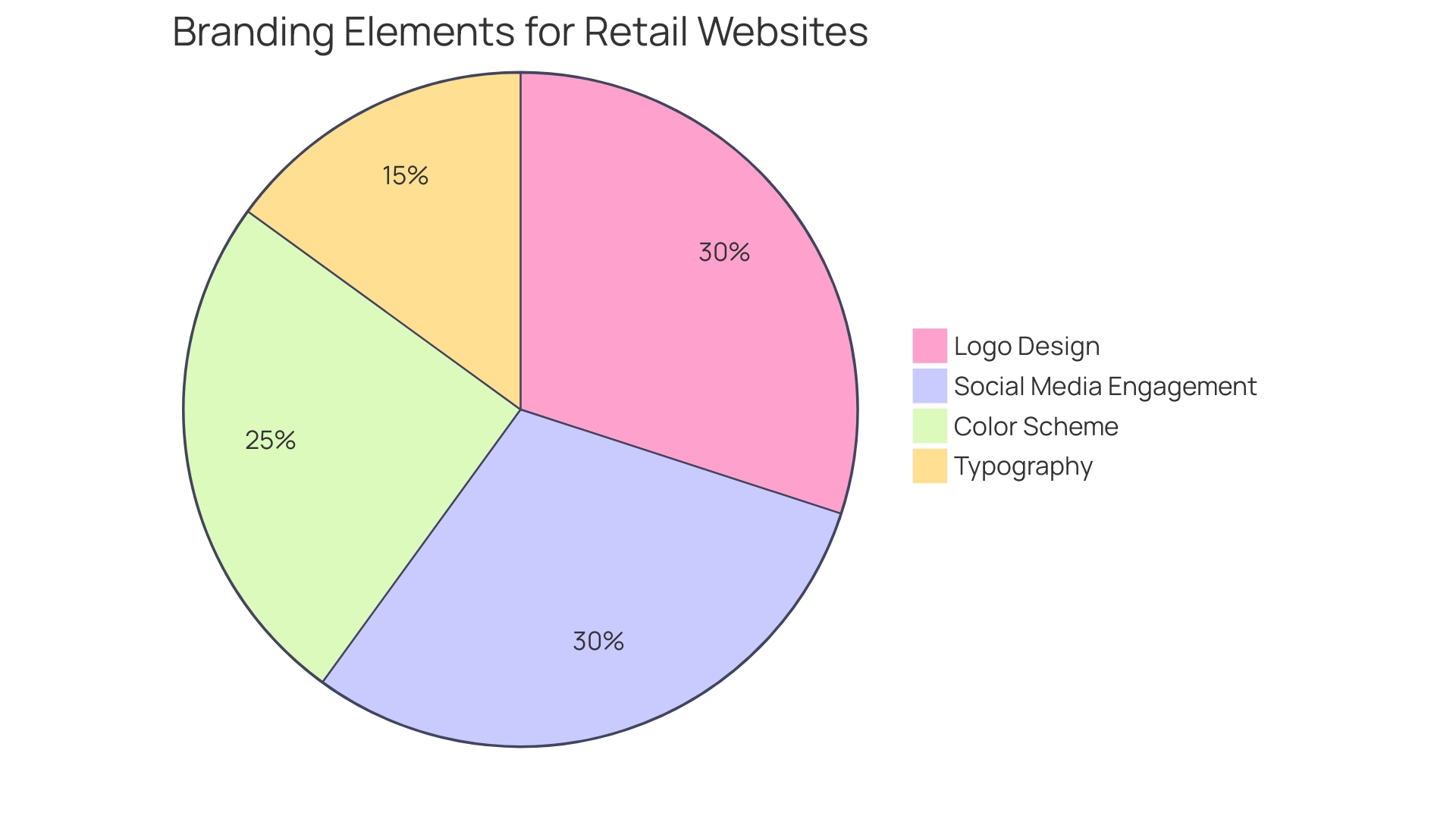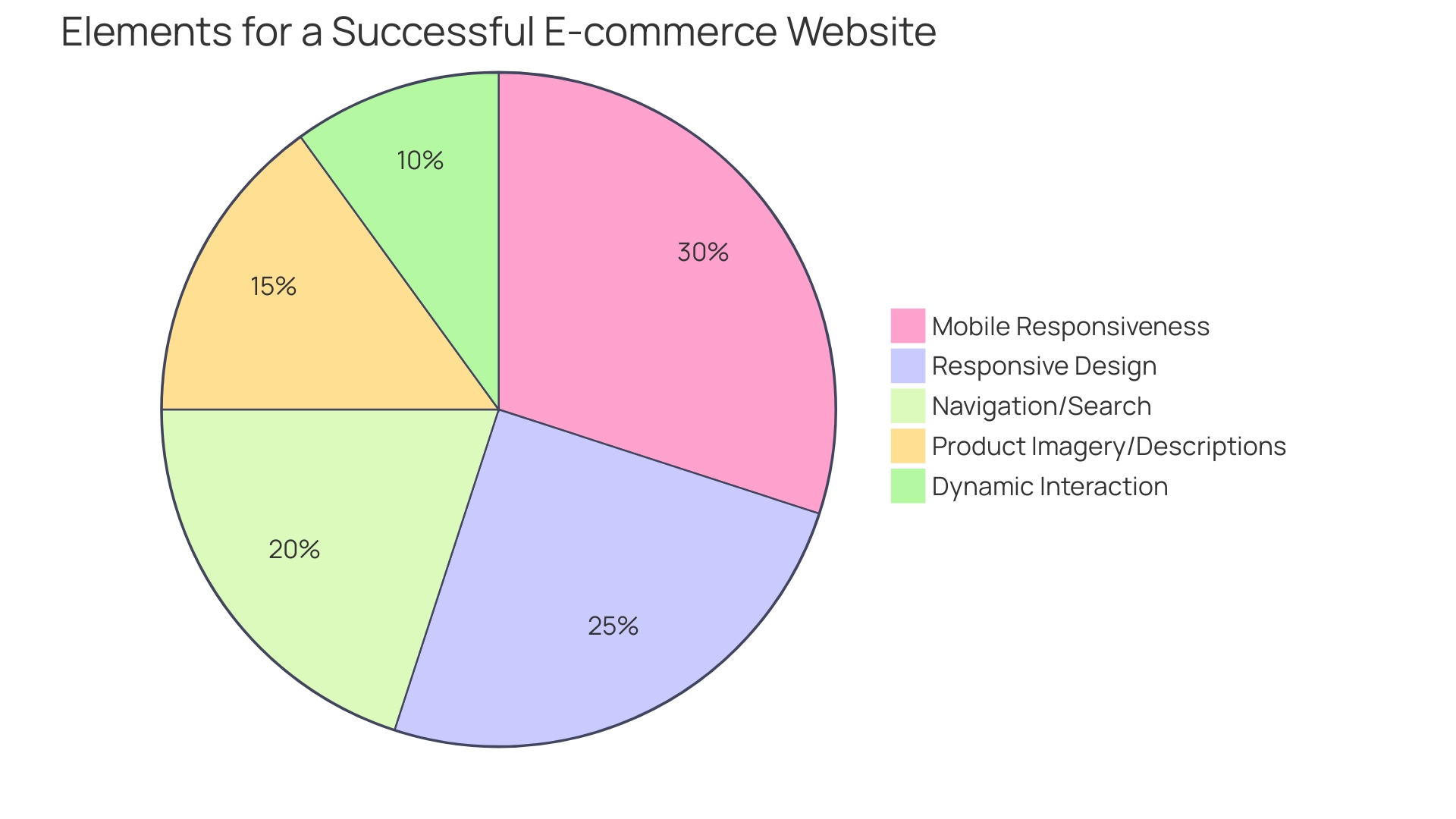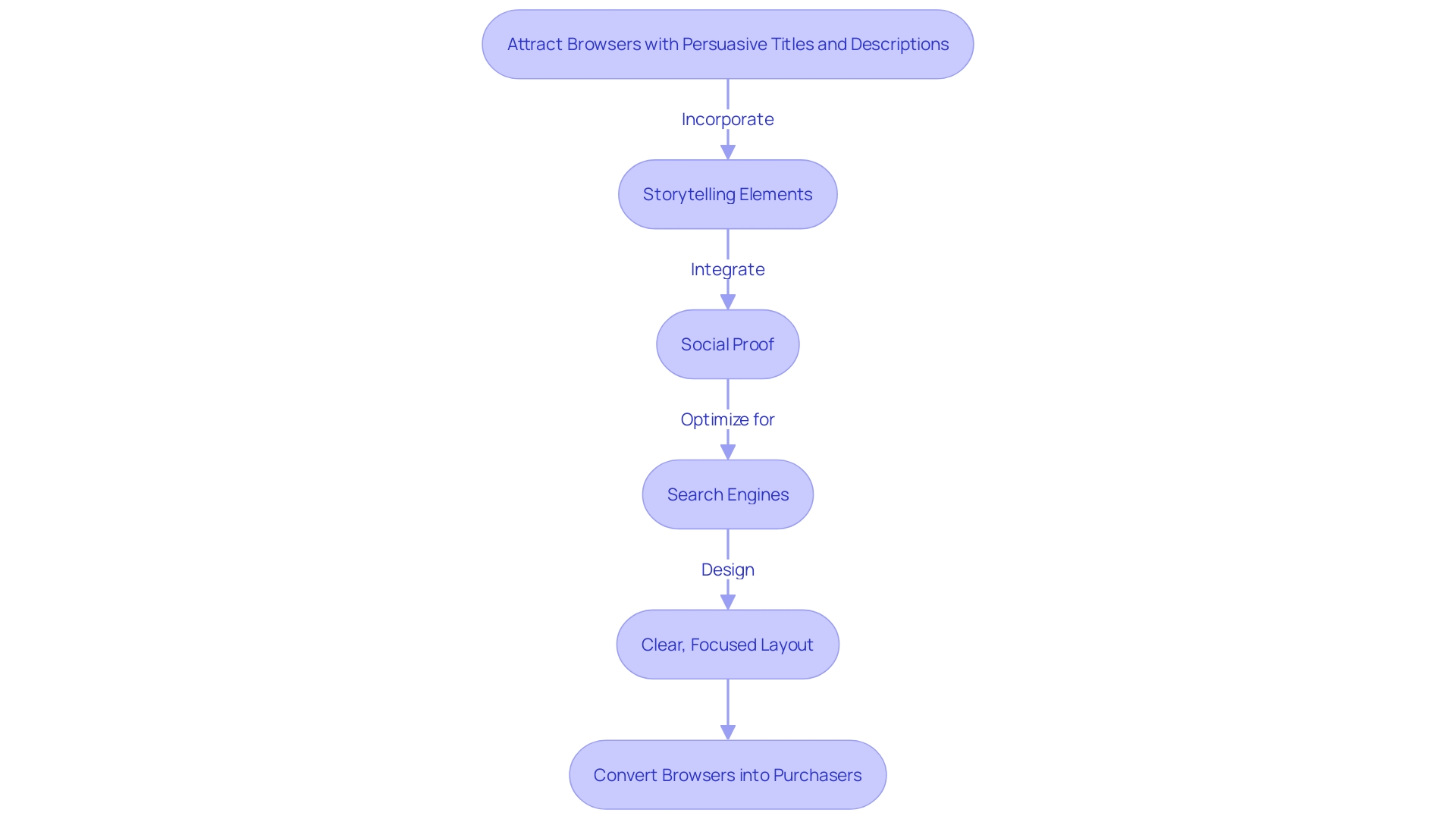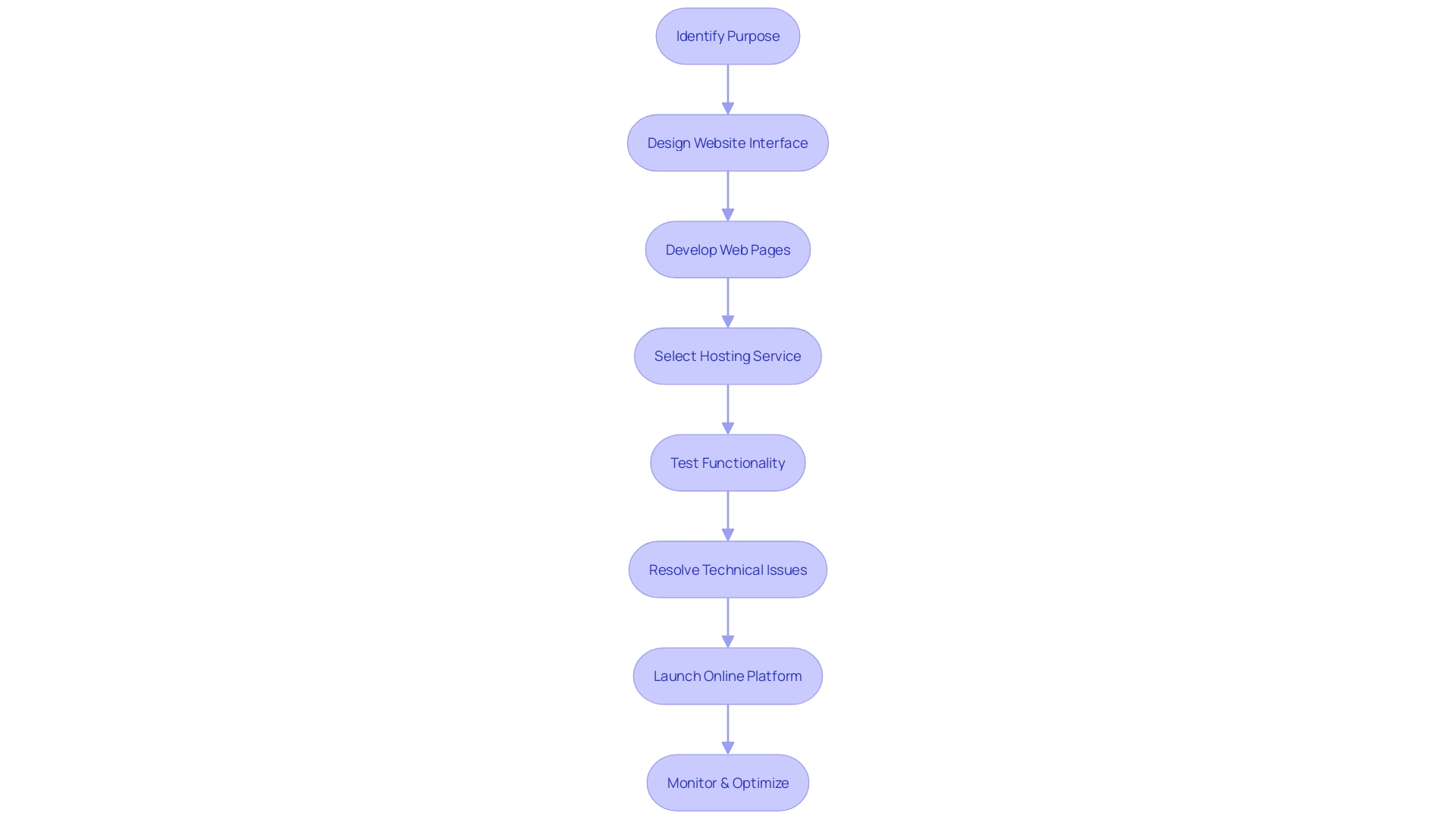Introduction
In today's competitive retail landscape, establishing a successful online presence requires more than just a functional website. It demands a comprehensive strategy that caters to the needs and preferences of your target audience. By defining your target audience and niche, choosing the right product line, creating a strong brand identity, registering your business, selecting an e-commerce platform, buying a domain name and setting up web hosting, designing your e-commerce website, setting up payment and shipping options, building and optimizing your product pages, and testing and launching your e-commerce site, you can create a dynamic and user-centric platform that resonates with your audience and drives sales.
In this article, we will explore each of these steps in detail, providing expert advice and recommendations to help you elevate your retail website and achieve long-term success. So, let's dive in and discover the key elements that will make your online retail business thrive.
Define Your Target Audience and Niche
To distinguish your retail website from the competition and engage your ideal clientele, it is crucial to start with a strong base that encompasses a thorough comprehension of your target audience and the distinctive offerings you provide. This means not only identifying the demographic characteristics of your potential customers but also delving into their online behaviors and preferences. Research shows that the typical shopper starts their research on the internet, emphasizing the significance of a digital presence that involves and educates them from the beginning of their shopping experience.
Your online presence must mirror the expectations and needs of your audience. This includes optimizing your site with search engine friendly elements such as schemas, detailed product descriptions, and local listings to ensure visibility in a crowded online marketplace. Keep in mind, an interface that is easy to use is essential; individuals are more likely to remain and make purchases on websites that are simple to navigate and offer a smooth shopping experience.
By utilizing data analytics, you can acquire priceless insights into consumer behavior, identifying how individuals interact with your site from the initial click to the final purchase. This data can help shape your marketing strategies, allowing for targeted campaigns that effectively convert visitors into committed clients. The goal is to create a digital environment that not only answers the preliminary questions that consumers have but also guides them through a smooth decision-making process, ultimately leading to higher conversion rates.
Incorporating advertising elements such as sponsored item ads and display ads can further enhance your reach, drawing in customers at various stages of their buying journey. The integration of these ad units has proven to create a multiplier effect, boosting traffic, conversion rates, and return on ad spend. In conclusion, your online store should be more than just a list of items; it should be a vibrant, educational, and customer-focused platform that connects with your target market and boosts revenue.

Choose Your Product Line
Choosing the ideal line is crucial for the success of any retail website. It's not just about what you offer, but aligning those items with the specific needs and preferences of your audience. Meticulous market research is essential to spotlight trending items and assess their profitability while understanding the competitive landscape. It's essential to offer products that resonate with your niche and promise sustained growth and profitability. For instance, at LensCrafters, expert advice is provided on eyecare and eyewear, ensuring their offerings align with consumer needs and showcasing a commitment to sustainability through responsible shipping. This strategy not only fulfills client anticipations but also establishes the organization as a accountable and client-focused entity.
When it comes to web design, keep in mind that user-friendliness is a top priority. A website is the initial interaction an individual has with your brand, and it takes a mere 50 milliseconds for them to form an opinion. This means that a visually appealing and intuitive design is not just nice to have—it's a business necessity. Actually, numerous enterprises opt to partner with expert web design agencies to guarantee they're utilizing the most up-to-date design methods and technologies, maximizing the chances of converting visitors into devoted patrons.
Moreover, the incorporation of a smooth online payment system is a crucial stage in the user experience. With consumers increasingly starting their shopping online, creating a compelling digital experience is crucial. Retailers should prioritize developing search engine optimized pages and offering comprehensive item descriptions and local listing pages to differentiate themselves in the face of digital disruption and competition. As the retail landscape evolves, a focus on unified commerce and cross-functional collaboration among company leaders is essential for success.
Ultimately, the aim is to establish a digital space that not only highlights your merchandise but also steers customers through a fulfilling experience from exploration to acquisition. Whether it's through offering unique products, meeting delivery and support expectations, or creating a store layout that encourages sales, the ultimate aim is the same: a retail platform that sells more while providing a memorable and responsible shopping experience.
Create Your Brand Name and Brand Assets
Establishing a powerful identity is not only about aesthetics; it's a strategic asset for any retail website. Take Gravis, Germany's leading tech retailer, which revitalized its identity to connect with a modern audience. The shift to a bold, typographic logo and a fresh color palette repositioned them in a competitive market, capturing the essence of their quality and innovation. This showcases the strength of a well-thought-out identity to not only attract but also keep a younger, more dynamic clientele.
A unified identity extends beyond the logo. It encompasses a systematic approach to visuals like the color scheme and typography, as witnessed by Forte Whey, whose choice of vibrant colors and strong typography reflects their commitment to a bold and healthy lifestyle. Such focus on detail in branding can greatly impact perception, as data indicates a rapid assessment is made within only 50 milliseconds, determining whether a visitor is kept or lost to rivals.
Consistency across all touchpoints, including your website and social media channels, is crucial for building recognition. An interactive social media strategy, engaging with clients promptly and effectively, can enhance this consistency, making your business more accessible and relatable. According to Satu Pelkonen from Squarespace, your digital real estate is crucial, and leveraging it effectively can make your image stand out.
Keep in mind, your identity is more than just a visual representation; it's an embodiment of your values and promises to your customers. As the market develops, keeping up means guaranteeing that your identity and design of your online presence are not only in agreement with your business objectives but also communicate directly and genuinely to your target audience, just as the most groundbreaking companies have discovered to do.

Register Your Business
Establishing your retail website as a legal entity is not just about compliance, it's a strategic step in brand protection and credibility. When considering a Doing Business As (DBA) registration, evaluate if the nature of your business warrants this or if forming an LLC or corporation offers better safeguards. A DBA can elevate your business identity and legal standing, but it's crucial to ensure your chosen name doesn't infringe on existing trademarks and adheres to all naming regulations. Non-residents can also establish an LLC in the U.S., although the process is more complex than for residents. Moreover, the recent initiative by the Consumer Financial Protection Bureau to collect detailed small business loan application data aims to foster transparency and reduce discrimination, emphasizing the importance of legal recognition for obtaining financial resources. As trademarks—aesthetics, symbols, or phrases that uniquely signify your offerings—can be registered or unregistered, selecting a distinctive name is essential. While registration isn't mandatory for trademark protection, it can significantly strengthen your legal position. With the retail landscape continuously evolving, staying informed and compliant with legalities is imperative for sustaining and growing your business.
Select an E-commerce Platform
Selecting the ideal e-commerce platform is a pivotal decision that can significantly influence the success of your online retail business. With the evolution of consumer preferences and technology, the integration of a seamless user experience (UX) has become a critical factor for staying competitive. A carefully selected platform should enable you to utilize the abundance of data generated at each touchpoint with consumers, from the initial ad click to post-purchase reviews, to gain insights into consumer behavior, optimize your marketing strategies, and reduce churn.
To ensure you make an informed choice, consider platforms that offer robust features tailored to your business needs, such as customizable templates, secure payment gateways, comprehensive inventory management, and versatile marketing tools. Popular options like Shopify, WooCommerce, and Bigcommerce have proven to be effective for many businesses by providing these key functionalities.
As you evaluate platforms, take into account the ease of use and scalability to accommodate future growth. The right platform should not only align with your current technical requirements and budget but also have the capacity to grow alongside your business. For instance, Chess.com's dedication to a seamless digital experience has allowed it to become the leading platform for chess enthusiasts globally, reflecting the importance of a stable and scalable digital infrastructure.
Remember, the e-commerce platform you choose should facilitate a smooth and enjoyable shopping experience, ensuring that individuals can easily navigate from browsing to buying. With the right platform, you can harness the power of data science to create a data-driven, customer-centric approach that drives sales and fosters long-term loyalty.
Buy a Domain Name and Set Up Web Hosting
Selecting the ideal domain name is a crucial step in establishing an online retail presence. It's the digital storefront of your brand and must be both memorable and reflective of your business identity. Incorporating relevant keywords can greatly enhance your visibility on search engines, making it easier for potential clients to find you.
Opting for a web hosting service that promises swift loading speeds, airtight security, and round-the-clock support is equally essential. The appropriate host can have a substantial impact on achieving smooth accessibility and optimal online platform performance, which directly affects customer satisfaction and sales.
The domain name not only serves as your unique online address but also plays a vital role in marketing and branding. It should swiftly convey the essence of your product or service, much like how names like PayPal and OkCupid instantly communicate their offerings. A thoughtfully chosen name can position your retail online store for success, attracting visitors and fostering trust.
In the digital marketplace, a strong web presence backed by solid hosting infrastructure is non-negotiable. With the right domain and hosting partnership, your e-commerce platform can thrive, providing an exceptional Internet experience for your customers and setting the stage for robust online sales.
Design Your E-commerce Website
The digital world is bursting with more than a billion online platforms, each competing for the interest of internet users. In such a crowded marketplace, creating an e-commerce platform that stands out requires not just aesthetic appeal, but also functional excellence. Choosing a responsive website template that reflects your company's ethos is just the starting point. Tailoring this template to incorporate your unique brand colors, fonts, and visuals is crucial for a cohesive brand experience.
Effortless navigation, with well-thought-out item categorization and seamless search capabilities, is fundamental. It ensures that visitors can find exactly what they're looking for without friction, mirroring the insights from industry experts who predict a continued emphasis on user-centric design elements. As Numiko, a leading web design agency, reveals, the fusion of text animation and user experience is setting the trend for immersive web environments.
The importance of high-quality product imagery and detailed descriptions cannot be overstated—they bring your products to life for the customer. With mobile commerce on the rise, ensuring the mobile responsiveness of your online presence is non-negotiable. Statistics indicate that over 50% of web traffic now originates from mobile devices, and a mobile-friendly site is more likely to see return visits and shares in the United States. Moreover, webpages that load rapidly on mobile devices experience a 15% higher conversion rate.
Recognizing that your digital entity is a digital presence hosted on always-online web servers, consider it a dynamic environment that facilitates interaction and provides solutions. It's a platform designed to meet and exceed the objectives of your e-commerce business, as seen in the dedication to quality in the American printing industry, where professionals strive for exceptional results.
In summary, the secret to a prosperous e-commerce website lies in a balanced combination of design and functionality that resonates with your brand and appeals to the constantly changing preferences of your target audience.

Set Up Payment and Shipping Options
Integrating secure and efficient payment gateways like PayPal, Stripe, and Authorize. Net is not just about offering variety, it's about creating a customer-centric experience that fosters trust and encourages repeat business. For example, Stripe's extensive integration into systems, covering elements such as payment proposals, captures, and fraud analysis, highlights the significance of a seamless payment solution that focuses on user requirements. By storing client profiles and billing information, Stripe enhances the billing process for both subscriptions and one-off invoices, demonstrating the value of a unified payment system for global transactions.
Similarly, offering a selection of shipping options that cater to the various sizes, weights, and destinations of products is equally critical. Transparency in shipping costs and delivery estimates can greatly reduce checkout abandonment—an frequent problem where individuals start the buying process but exit before completing the purchase. By addressing these two major factors, businesses can work towards improving their average e-commerce conversion rates, which are crucial for gauging online success. Moreover, embracing newer payment trends, such as cryptocurrency, can cater to a growing community that prefers alternative payment methods, as evidenced by Algarve Tips NL's acceptance of Bitcoin for its services.
In the end, comprehending your main clientele and their buying habits, combined with the appropriate payment and shipping solutions, can assist you in constructing a strong online business. The goal is to minimize cart abandonment and maximize customer satisfaction, leading to a higher volume of successful transactions and a thriving e-commerce platform.
Build and Optimize Your Product Pages
To effectively convert browsers into purchasers, your pages must be meticulously crafted. They should not only display your items but also serve as the frontline in converting interest into sales. The secret lies in emphasizing the unique benefits of your offerings through concise, persuasive titles and descriptions, accompanied by high-quality visuals that provide individuals with a complete perspective from different viewpoints.
Craft a narrative that connects with your target audience by incorporating storytelling elements that define the intended recipients, the challenges it addresses, and the change that consumers can anticipate. This method not only outlines the features and advantages of the item but also establishes a bond with potential buyers, making the item relatable and appealing.
Harness the influence of social proof by prominently integrating testimonials and ratings from users on your pages showcasing your offerings. This not only builds credibility but also gives prospects the reassurance they need through the experiences of others. Utilize user-generated content wisely by asking specific questions that yield informative reviews, especially for versatile items such as fashion or outdoor equipment.
Optimization for search engines is crucial. Inject your item titles, descriptions, and meta tags with valuable keywords that potential customers use to search for items online. This strategic placement not only improves visibility but also drives targeted traffic to your item pages.
The conversion power of your pages can be measured against industry benchmarks to ensure you're not just meeting averages but aiming to be among the top performers. With careful design and strategic content, your merchandise pages will not only look good but will also deliver in terms of performance—much like the Ryan Gosling of landing pages, compelling and effective.
Lastly, the layout of your merchandise landing pages should be straightforward and concentrated, evading mess that diverts from the message and the single call-to-action (CTA) that directs users towards making a purchase. Remember, a well-designed product page with a clear, singular goal is more likely to convert a visitor into a satisfied customer.

Test and Launch Your E-commerce Site
When preparing to launch a retail online platform, the secret to success lies in meticulous attention to detail and user experience. Just as Zalando's team ensures its IT infrastructure can handle peak traffic times, your online platform should be rigorously tested for functionality and ease of navigation. A smooth payment and checkout process, similar to the customer-centric approach of Elkjøp, is crucial to replicate the trust and expertise shoppers find in-store. It's important to identify and resolve any technical issues, such as broken links or missing images, before going live. After the launch, continuous performance monitoring and user behavior analysis are essential for ongoing optimization. By learning from leaders in the e-commerce industry and leveraging recent trends, such as the integration of AI to enhance customer interaction, you can refine your online presence to stand out in a competitive market and captivate your audience's limited attention span. Adopting a proactive and adaptive approach to website management will ultimately contribute to driving sales and establishing a robust online presence.

Conclusion
In conclusion, to create a successful online retail presence, it is essential to understand your target audience and their preferences. Leverage data analytics to gain insights into consumer behavior and shape your marketing strategies accordingly.
Choose the right product line by conducting meticulous market research and aligning your offerings with your audience's needs. Invest in professional web design and create a seamless online payment system for a user-friendly experience.
Building a strong brand identity goes beyond aesthetics. Consistency across all touchpoints, including your website and social media channels, is crucial for building brand recognition. Register your business to ensure legal compliance and enhance credibility.
Select the right e-commerce platform that offers robust features tailored to your business needs and prioritizes a seamless user experience. Buy a domain name and set up web hosting to establish a strong online presence.
Design your e-commerce website with a harmonious blend of design and functionality. Prioritize effortless navigation, high-quality product imagery, and mobile responsiveness. Optimize your product pages with compelling content and social proof.
Integrate secure payment gateways and offer a variety of shipping options to create a customer-centric experience. Understand your primary customer base and their purchasing habits to build a robust online business.
Test your website rigorously before launch and continuously monitor performance and user behavior for ongoing optimization. Adopt a proactive and adaptive approach to drive sales and establish a strong online presence.
By following these steps, you can create a dynamic and user-centric platform that resonates with your audience and drives long-term success in the competitive online retail landscape.





